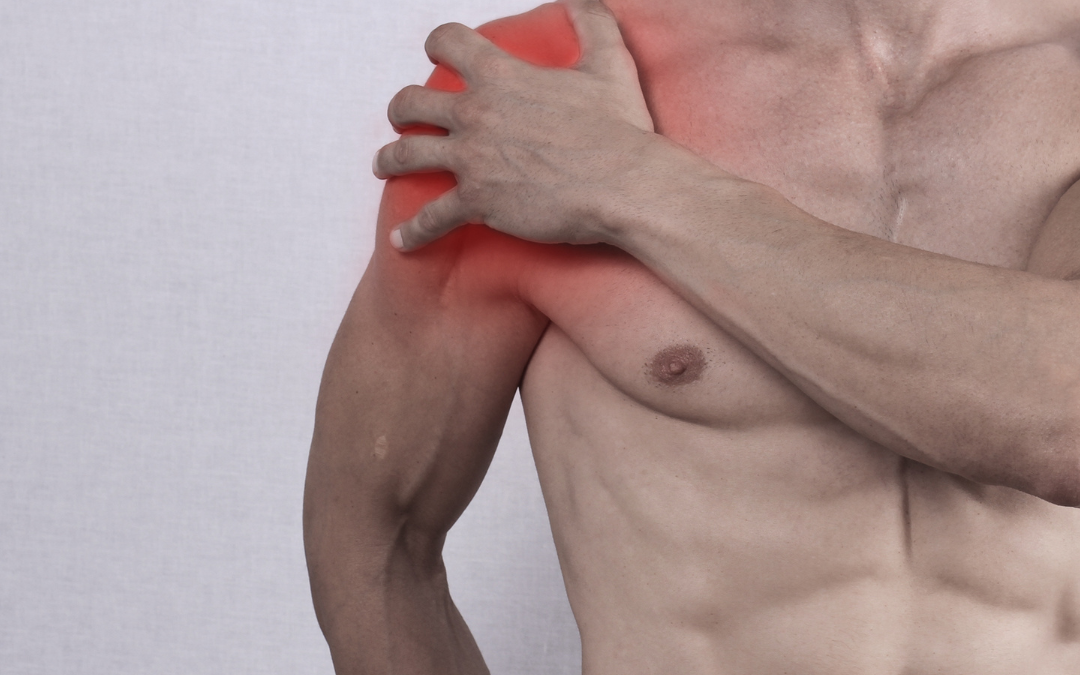At our sports performance and rehabilitation facilities, we see many hockey athletes with injuries to their shoulders. This is not surprising due to the speed and the physical nature of the sport. Injuries can vary from simple muscle strains to full joint dislocations. Today we will go over a brief discussion of a couple of the more common injuries that occur throughout the year.
During off-season training, athletes can develop shoulder impingement. Soreness develops on the front of the shoulder joint and towards the top. Movements of the arms overhead generally cause the most discomfort. This is a chronic injury developed from overuse and fatigue which causes muscle tendonitis. Modification of the strength training program and treatment for inflammation in the shoulder can usually rectify this issue with minimal time lost. If pain continues to persist, see a healthcare professional to guide you in a proper treatment plan. Shoulder dislocations are exactly that. The “ball” of the glenohumeral joint comes out of the “socket.” This can occur from and body check, falling on an outstretched arm, or collision with the dasher boards. Once the joint is reduced (put back in place), the athlete should see an orthopedic physician to rule out any additional damage to the joint. A rehabilitation program that focuses on rotator cuff strengthening should be followed prior to the athlete’s return to play. This protocol may last several weeks depending on the individual’s symptoms. In some cases, a shoulder brace may be suggested to help support the joint as the hockey player begins to resume normal hockey activities such as body contact.
A shoulder separation is also known as an AC separation. The “AC” stands for acromioclavicular joint. This is a smaller joint that helps support the glenohumeral joint. The AC joint is formed by the tip of the collar bone (clavicle) and a portion of the shoulder blade (acromion process). The most common mechanism of injury is receiving a body check from an opposing player. The severity of the injury can be graded based on the amount of damage done to the ligaments of the joint and how far the two bones have become separated. When the ligaments are fully torn, the athlete will have the classic bump on the top of their shoulder at the end of their collar bone. Once evaluated for severity by an appropriate medical professional, a return-to-play protocol involving progressive resistive exercises to increase the strength and stability of the shoulder complex should be initiated. This process may last several weeks before the symptoms are resolved.
Return to play from a shoulder injury is not something that should be rushed. See a medical professional such as a certified athletic trainer to guide you on an appropriate rehabilitation program. Due to the multiple impacts and collisions hockey players incur over the course of a season, it is vitally important the athlete be able to demonstrate full strength and stability of the shoulder joint complex prior to returning to games. The rehab process does not have shortcuts and should not be rushed.
Mike Hannegan is an Athletic Trainer and Strength Coach with ten years of experience in the NHL with the Anaheim Ducks and St. Louis Blues. He is currently the Director of the Compete Sports Performance and Rehabilitation facility inside The Rinks Yorba Linda Ice located in beautiful Orange County, CA. He can be reached at mike@competeperformance.com

